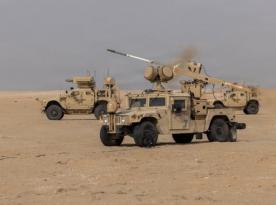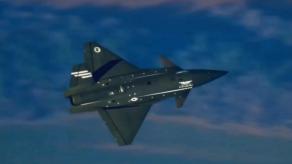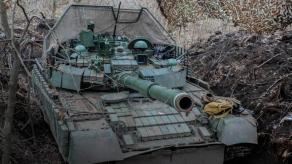Minister of Strategic Industries of Ukraine Oleksandr Kamyshin, speaking at the European Business Association, shared some information about the production of loitering munitions in Ukraine, similar in design to the iranian Shahed-136 drones used by russia to launch long-range strikes on Ukrainian infrastructure.
Forbes outlines the key points of his speech at the annual forum. The minister confirmed there is a domestic product that could be called a "Ukrainian Shahed," as the media labeled it after a vague disclosure by Herman Smetanin, director of Ukraine's main state defense industry enterprise UDI.
Read more: Ukrainian Defense Industry Has No "Shahed-136 Analog" in Production But Chose a Correct Focus on FPV Drones

Kamyshin on his part underscored he won't be diving into specifics, nor revealed the product's real name. The statement is followed by his words about a "service center" that was established to help small drone-making companies, and this initiative is one of the ways the state is supporting private manufacturers with available production capacity:
"From this perspective, the 'Ukrainian Shahed' appeared at a state-owned plant, indeed," the minister of defense industries told the media.
For a reminder, earlier the head of UDI (JSC Ukrainian Defense Industry) said the state enterprises prioritized "more complex and expensive projects" than creating an analog of the cheap loitering munition of iranian design, leaving this effort to private manufacturers' initiative.
The update from Kamyshin sheds some light on this matter, as it seems the government is supporting the project in a unique way: by providing workshops, tools, and assembly lines that smaller private defense companies would otherwise not have access to. This has increased the capacity of production and helped them reach the tempo of making "dozens" loitering munitions a month, according to the minister.
With the level of secrecy around the development, that even the real name of the "Ukrainian Shahed" remains classified, no wonder there is no clear image of what kind of weapon is meant under these words. Defense Express has already touched upon the problems with having an unclear concept of an attack drone trying to be both versatile and expendable.
However, there is a possibility the Ukrainian long-range drone project took a 180° turn in over a year of development.

On the other hand, we have seen Ukrainian anonymous manufacturers show a variety of successful UAVs falling under the category of a cheap-to-produce loitering munition. For example, the Bober drone which was supposedly used in Ukrainian attacks on the Moscow City; the Morok, deployed by the military forces of SSU, the Ukrainian counterintelligence department; or the Rubaka, used by the Defense Intelligence forces.

Holding onto sensitive information about the weapons in development is reasonable, so as to not let any flaws slip to the enemy to exploit, the basics that russians are yet to learn — remember the weaknesses of the Lancet suicide drone and the 40N6 missiles for S-400.
That aside, the cooperation of Ukrainian big state defense concern and private drone assembly workshops is a strategically significant undertaking because generally, the main problem most private companies encounter is the lack of production capacity and resources, including tools and logistic chains, and their biggest advantage is flexibility and swiftness in making and implementing decisions while state enterprises tend to get mired in bureaucracy.
Read more: DroneHunter UAVs Can "Capture" Drones Such as Shahed-136s, Which are Attacking Ukraine (Video)














